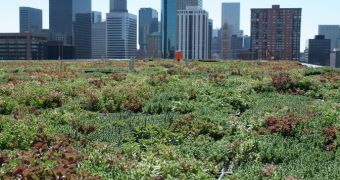While some go out of their way to disprove solid scientific data, others are really trying to mitigate the effects of climate change and global warming. One such person is University College London (UCL) Bartlett School of Architecture professor Dr Rachel Armstrong, who is proposing that next-generation buildings be constructed out of materials that live. That is to say, the expert argues that structures made out of biological systems could contribute to cleaning our planet's atmosphere and to mitigating the effects of global warming and related dangers.
Biological organisms could be engineered into advanced paints, for example, which could allow buildings to become more eco-friendly and also to reduce their carbon footprint on the environment. “Our buildings offer a huge engineered surface area on which we could develop new applications, especially biological ones. We’ve been building with the same Victorian technologies for so long, now it’s time to try something new,” the expert said during a UCL Lunch Hour Lecture, which she held November 27 at the university, PhysOrg reports.
“Adapting biological materials to create ‘living’ buildings may seem outlandish, and is not without its problems, given the time it takes to grow organisms and the need to feed them and manage their waste. But if architects can overcome these limitations and make the connection between artificial structures and natural ones, we could harness ‘metabolic materials’ such as bioluminescent bacteria that produce light through biochemistry, for example, and reduce our energy drain on the grid,” Dr Armstrong said.
The expert even suggests planting protocells underneath the city of Venice, a monument of times past and an invaluable spring of knowledge and history. The old monuments are currently sinking, in spite of Italian authorities' best efforts to fix the issue. Armstrong said that an artificial reef could be grown using these biological organisms, and that the new structure could help support existing buildings. She admits that the technologies are still in their infancy, but adds that this is the right time to act, before the damage becomes so severe that nothing can be done.
“In collaboration with Martin Hanczyc of the University of Southern Denmark, we’ve been exploring protocell systems which act like chemical computers whose hardware is based on the self-assembling properties of oils and whose software is programmed through chemical reactions that affect the properties of the oil. We aim to program protocells to make carbonates from carbon dioxide, thus acting as a ‘carbon sink’. This is the first step towards developing a ‘smart’ surface coating that could extract carbon dioxide and other pollutants from the environment,” Dr Armstrong concluded.

 14 DAY TRIAL //
14 DAY TRIAL //